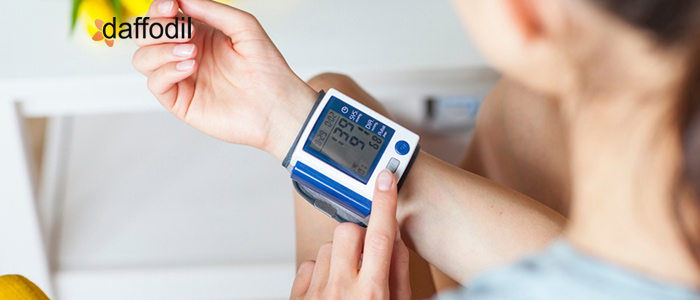
Amidst the social-distancing norms of the COVID-19 pandemic, it has become more crucial than ever to come up with innovations in remote patient care. It is no wonder that big tech conglomerates like Amazon and Microsoft are pouring capital into digital healthcare investment, with a special focus on Remote Patient Monitoring (RPM).
Innovation in RPM is good news for patients diagnosed with chronic conditions like heart disease and diabetes as well. Damage from these diseases accelerates fatalities.
Enhanced monitoring with the help of Artificial Intelligence-aided analytics could help diagnosticians control the extent of this damage with timely medical intervention. Additionally, cloud computing technologies and the right Electronic Health Record (EHR) systems help create a robust RPM network.
Reducing the Risk of Contagion with RPM
Long before even COVID-19, the probability of spreading viruses and hospital-acquired infections was observed to increase with the duration of a patient's hospital stay.
The US Centers for Disease Control and Prevention (CDC) data points out that hospital stays accounted for a 17.6% risk of patient infection with a 1.6% daily increase.
Therefore, the need for secure healthcare delivery with telemedicine software is more crucial than ever before.
Most hospitals continue to rely on manual spot-checks for monitoring a patient's condition every 4-6 hours, which makes matters worse. There are extended periods when deterioration in a patient's condition tends to go unnoticed.
Healthcare professionals are not receiving the most updated patient info at all times. Things get even more complicated when the nursing staff's shift timings change.
How RPM Helps Medical Experts
All of the above issues necessitate the widespread adoption of RPM with AI-powered real-time data analytics. Using RPM data, medical practitioners can make insightful decisions and prioritize care efficiently.
When the ward gets overpopulated, this capacity to prioritize is the only way to properly triage patients and treat the most critical illnesses first.
AI-powered analytics organizes the data from RPM devices such as oximeters, spirometers, and apnea monitors into manageable layers. Hospital resources and the right medical expert's opinion can then be applied.
Such data analytics can be carried out for thousands of patients simultaneously and in real-time.
The US Centers for Medicare and Medicaid Services (CMS) determined that with AI-powered RPM, the future of medicine will be able to:
- Cut down patient readmissions by 38%
- Reduce emergency room calls by 25%
- Boost patient satisfaction by 25%
- Cut overhead by more than 17%, and
- Improve Medicaid compliance by 13%
Major Elements of RPM
An RPM can be segmented in the same way you would segment the various modules of an Internet of Things (IoT) setup. The high-level components of RPM can then be defined as the following:
- Personal Monitoring Device:
These devices capture all the relevant patient data and usually come equipped with a Bluetooth module. Sensors implanted under or over skin or wearable devices track all kinds of health factors, from blood pressure to heart rate.
For now, only non-invasive devices measuring a basic range of physiological phenomena would be eligible for US Food and Drug Administration (FDA) authorization.
All wearable devices must be able to transfer patient metrics to the health care provider. The most popular option for this transfer is via Bluetooth Low Energy (BLE) communication.
- Patient-side mobile application:
A mobile app collects patient data from the wearables and sends it to the clinician. These apps must be compatible with BLE data exchange networks and have caching mechanisms to safeguard against connectivity issues.
A secure API built on Fast Healthcare Interoperability Resources (FHIR) standards should integrate the application with the healthcare provider's system.
The application is usually built with informative visuals and top-notch UX design to make it engaging for patients to use. These apps have medication reminders, a video calling facility, and access to educational content
- Cloud Database:
The cloud repository can hold the raw data received from the patient's wearable device. AI-enabled analytics stratifies this data into manageable, labeled clusters.
Several systems offer direct-to-cloud connectivity for RPM devices, wherein all the captured information gets deposited in the cloud.
- Hospital Side Web Application:
A hospital-side web app is similar to the patient-side app and is compliant with Health Insurance Portability and Accountability Act (HIPAA) standards.
It uses FHIR-enabled APIs to interact with the hospital administration's Electronic Medical Records (EMR) system. This app also communicates individually with the departmental data silos.
- Other modules:
The RPM setup also includes some or all of the following modules:
i)Decision support: In this module, the patient's vital signs are copied from the repository and compared to the normal values before sending them to the physician.
ii)Reporting: The RPM system compiles all the relevant patient metrics and manual inputs into reports which are sent to the medical staff.
iii)Notification: Based on whether the decision support module finds abnormalities in the patient data, a warning message is sent to alert the relevant physician or consultant.
iv)Analytics: Equipped with Business Intelligence (BI) and AI-enabled data visualization techniques, real-time inferences are made on the patient data. Doctors can use these inferences to predict risks and take well-rounded treatment decisions.
ALSO READ: Top 10 Home Healthcare Apps and Benefits of Custom Healthcare Software Over Them
Popular RPM Devices and Upcoming Prototypes
According to a 2020 survey by IHS Markit, more than 4 million patients would be monitored remotely by the end of 2022, globally.
Thanks to ongoing innovations by Big Tech, there will be a 34% increase in the use of RPM over the next year alone. Some devices that are taking the medical devices market by storm include the following:
- Microsampling Devices
Remote specimen collection devices are growing in popularity, especially the ones based on the Volumetric Absorptive Microsampling (VAMS) technique.
With new analytics technologies, blood from the fingertip is enough as it has less than 5% volumetric variation. The need for venous blood collection and conventional phlebotomy is eliminated with VAMS.
- Continuous Glucose Monitors
Using a sensor inserted under the skin, these devices can monitor blood sugar levels throughout the day and detect high levels. While physicians can use these devices remotely, it also helps parents of children with Type-I Diabetes to monitor their levels and take timely action when they reach dangerous numbers.
- Inexpensive Surgical Automation
These devices override the surgeon's limitation in reaching certain places inside the human body with precision. Although Robotic Process Automation (RPA) in surgical tools is an expensive investment, several companies such as Riverfield and Stryker are developing methods to mass-produce these tools at affordable prices.
These tools would provide surgeons with magnified projections of the target organ and provide advanced instrumentation to reach them safely.
- AI-enabled Vision
By the end of 2021, AI is going to enhance computer vision, which can be applied to get faster results for visual aspects of patient vitals. The first use case for this technology is going to be the estimation of blood loss or hemorrhaging in mothers during or after childbirth.
This technology will become especially pivotal in hard-to-reach geographies and rural areas, where there is a shortage of gynecological intervention.
Conclusion
RPM systems help not just doctors in treating a much higher volume of patients but also help patients participate more actively in managing their health.
These technologies will continue to grow in relevance in the coming years when unexpected accessibility issues are expected to crop up.
Doctors would also be able to leverage AI-enabled data analytics and cloud computing involved in RPMs for improved diagnosis and precision in treatment.
To learn about the immense potential for RPM to optimize your delivery of healthcare, you can refer to our custom healthcare software development solutions.



